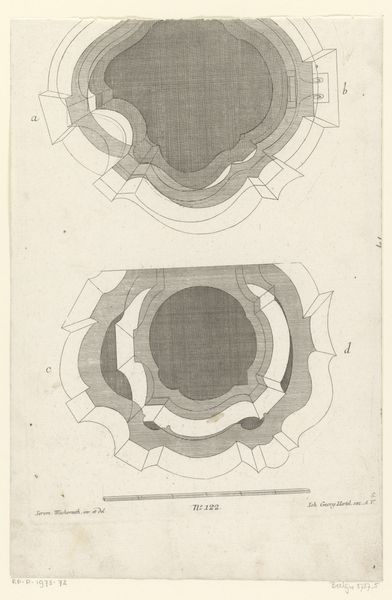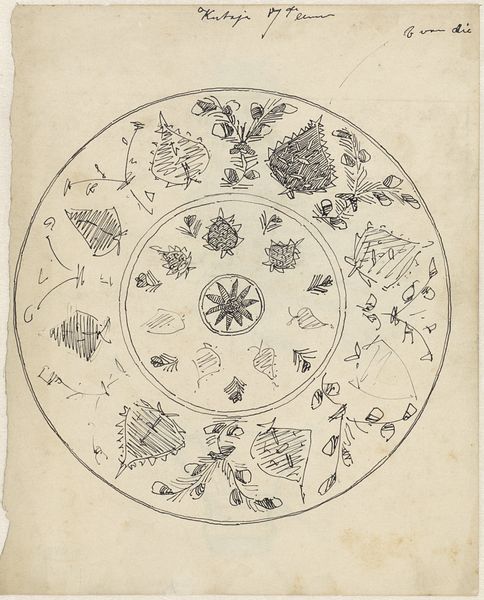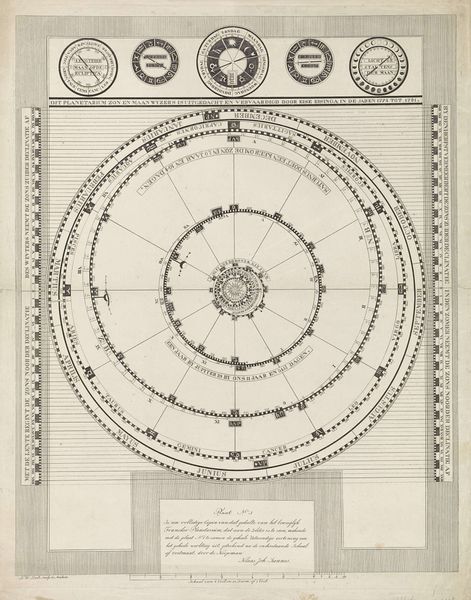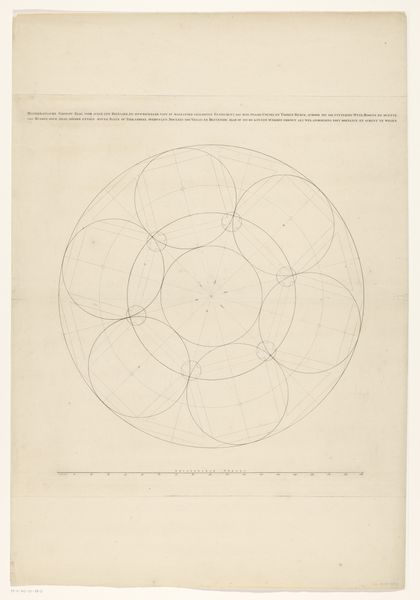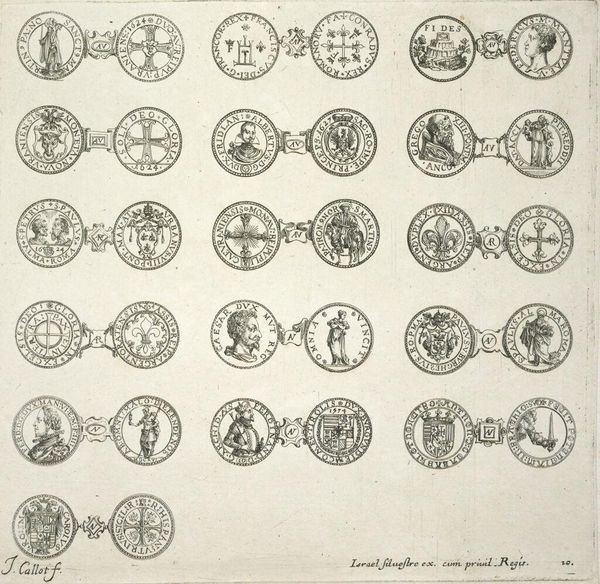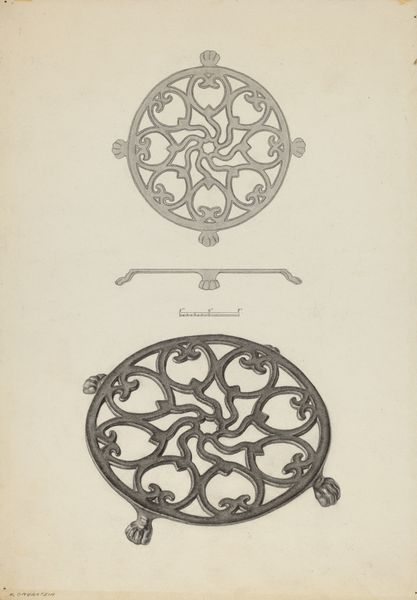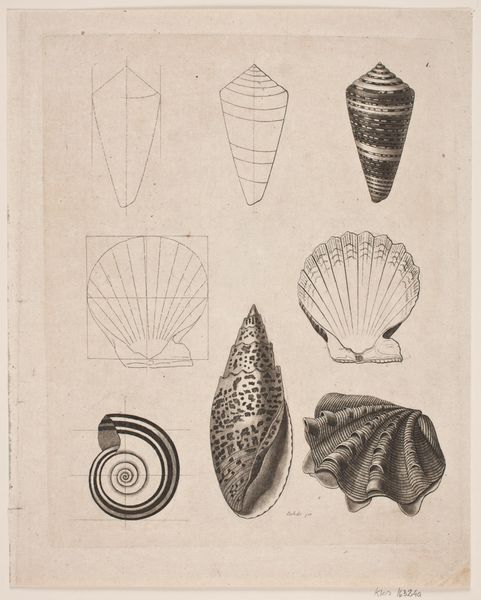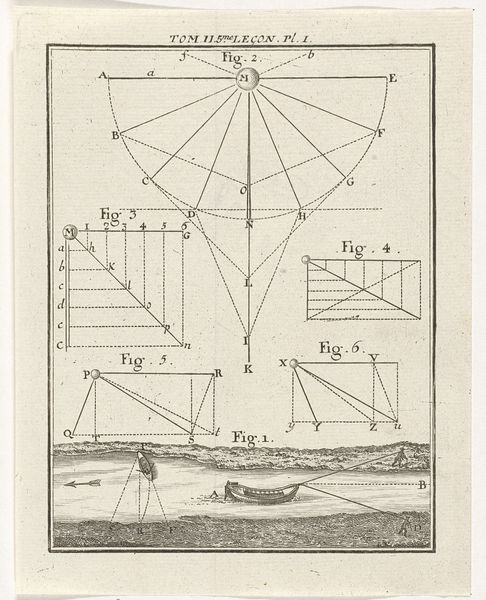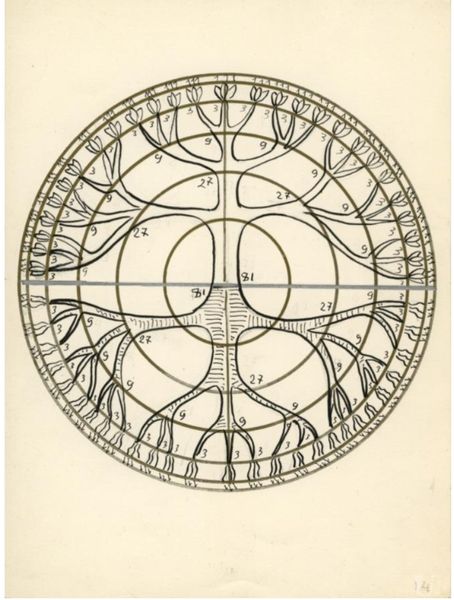
Dimensions: height 357 mm, width 228 mm
Copyright: Rijks Museum: Open Domain
Editor: This print, titled "Boutonnier, Passementier" by A.J. Defehrt, dates back to the mid to late 18th century and seems to illustrate designs, perhaps for buttons or trims. The detailed engraving work gives it a formal, almost scientific feel, despite the decorative nature of the designs themselves. What do you make of a piece like this? Curator: Well, viewing this engraving through a historical lens, it speaks volumes about the democratization of design. Printed pattern books like this circulated widely, offering access to the latest fashions and decorative motifs to artisans and even individuals far removed from the royal courts or wealthy elites where these styles originated. Consider the role of printmaking in disseminating cultural trends and shaping aesthetic tastes on a mass scale. Does that change how you see its “formal” quality? Editor: I hadn't thought of it that way. I was focused on the almost mathematical precision of the designs and the way they’re presented, like a catalogue of options. Now, knowing they served to broaden access makes it less detached, and more actively social. Did these prints dictate style or simply reflect it? Curator: It's a complex interplay. These pattern books undoubtedly codified and standardized certain aesthetics. They helped *define* style, presenting options within a structured framework. But they also responded to existing tastes and demands. Printmakers and publishers were acutely aware of market trends and consumer preferences. Also think about workshops--how would an artisan engage this sheet? How did the workshop owner dictate the style? Editor: So, this isn’t just a pretty picture, but evidence of a whole system of cultural exchange and commercial influence at play. Curator: Exactly. It highlights the powerful role that printed imagery played in shaping material culture and social practices during the 18th century. It invites questions of social equity, access, and the cultural influence of images. Editor: I’m going to think differently about printed images moving forward, now recognizing how they acted as key mechanisms for disseminating and democratizing artistic concepts.
Comments
No comments
Be the first to comment and join the conversation on the ultimate creative platform.


